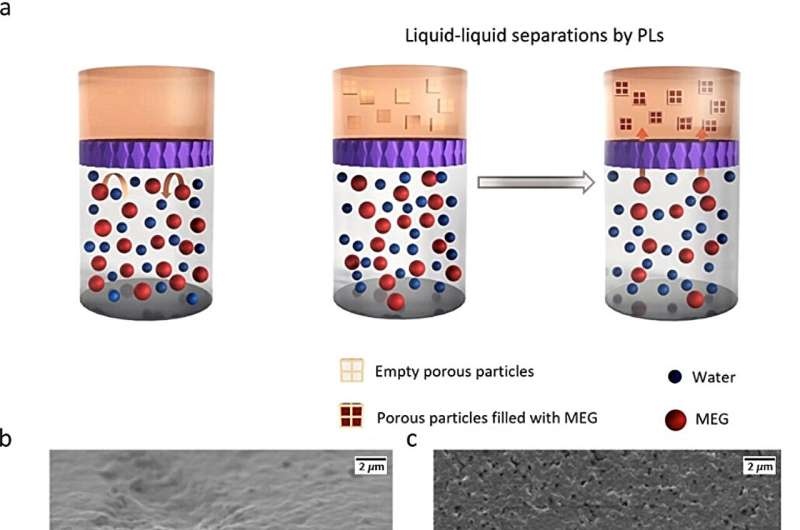This is a pivotal discovery in liquid-liquid extraction with porous liquids, which could be revolutionary for both sustainability and the beverage sector.

Tackling Harmful Waste
It marks a step-change in liquid-liquid separation, one that has been demonstrated for the first time with porous liquids (PLs) by researchers at the University of Birmingham and Queen’s University Belfast.
The research centred on dealing with the problem of toxic MEG (monoethylene glycol) – a common de-icer in the aviation sector. The study focuses on runoff from MEG-water mixtures that are currently used to de-ice and represent a large threat to aquatic ecosystems.
In some cases, these types of porous liquids were found to absorb up to 88% of the pore volume of the PLs with vacancy fitting for absorbing MEG, neatly leaving water behind. The industry has struggled for years to safely and economically dispose of the environmentally costly waste, making this a potentially game-changing find.
A Healthier Drink Solution
The results obtained by the research team have also opened up new horizons for possible applications of this new method of liquid-liquid extraction in other industrial sectors, especially in beverage manufacturing.
The scientists then combined the bacteria with a non-toxic, pH-resistant PL so that they could lower the alcohol content in wine and gin without altering their flavour. It is claimed that this innovation might have changed the game in the drinks industry, a consumer base wanting more low-alcohol products with full strength taste and experience but without full strength aftereffects.
Assistant Professor Deborah Crawford at the University of Birmingham said: “This innovation could be a game changer for the drinks manufacturing industry, which is experiencing increased consumer demand for no and low-alcohol beverages that taste and smell like popular alcoholic beverages, but without some of the negative after effects. We’re thrilled to further develop this idea and get it realized.
Conclusion
She meanwhile said that this liquid-liquid separation could be a real game-changer in sustainability and the drink industry. By offering a path to remove toxic or undrinkable alcohols from a wider range of mixes, the researchers have now enabled means to avoid environmental harm and comply with changing consumer choices in the drinks sector. Such a creative use of space shows great promise for a better, more efficient and healthier future.
